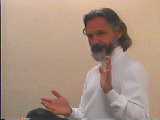 |
|||||||||||
 |
|||||||||||
 |
|||||||||||
 |
|||||||||||
 |
|||||||||||
 |
|||||||||||
 |
|||||||||||
 |
|||||||||||
 |
|||||||||||
 |
|
|
|
|
||||||||||||||||||||||||
|
Analysis of students' understanding. . Since the Middle School Science problem situation embeds a variety of possible sub-problems, students may differ on what they define as a problem of greatest concern. In spring 1999 the class recognized several dilemmas in the situation, but eventually decided that poor reading comprehension was a critical problem. At this point, the class framed the problem as trying to help the science teacher improve the way her seventh graders read for understanding. The solution phase took place in two steps. First, each student proposed an individual answer to the question—What should the teacher do to help her seventh graders understand what they read? Second, students worked in small groups to produce a collective answer to this question based on the individual answers of the group members. In addition, I asked students to explain how their proposals would change the way seventh graders read for understanding. In other words, the "solutions" to the problem consisted not just of a list of strategies or techniques, but a rationale that explained how and why the strategies would improve comprehension. (See the assignment.) It is important to note that none of my students had a course in reading, and had no familiarity with reading research. I did not expect them to become expert in this area. Nor did I expect them to rely on a cookbook of methods for teaching reading. Rather than draw upon established methods, the class had to invent solutions to the problem by using newly-learned theoretical concepts and principles as the basis for proposing and justifying teaching strategies. Consequently, students' solutions consisted of one or more "strategies" and an explanation of how and why these would improve the seventh graders' comprehension. I evaluated the individual and group answers on the basis of three criteria: Individual work. A small number of students proposed strategies that met all three criteria. Students proposed strategies to change the way children read, but not ones that would directly affect comprehension. For instance, many students advocated using a "worksheet" to focus the seventh graders' attention on important concepts. Other proposals focused on techniques to change children's interest in and motivation for learning the subject. The major finding from the analysis of individual answers is that students did not use the theoretical perspectives they studied in the course, but relied instead on what they already knew to propose and justify strategies. Group answers. Students worked in groups to propose the best ideas based on individual answers from group members. (See March 2 assignment). The group answers tended to be a combination of strategies and suggestions. Another group response focused more closely on how some strategies might affect reading comprehension. Although not very sophisticated, the answer focused on core constructivist principles. Even though the class had read and discussed constructivist learning theory, individual students did not use these ideas in their problem solutions. Constructivist ideas appeared in the group answers, but by no means did the groups' answers elaborate on the connections between the proposed strategies and comprehension processes. I believe two main reasons account for student performance. One has to do with how the conceptual complexity of the task affects students' ability to transfer or apply new ideas to the problem, and the second has to do with how students' intuitive theories about learning and teaching influence their thinking.
In summary, individual students could define and explain specific concepts in constructivist learning theory, but could not apply those ideas to analyze the classroom dilemma. Groups were somewhat more successful in using those ideas. This is a case in which student performance is constrained by the complexity of the problem solving task, the unfamiliarity of new ideas, and the familiarity of old ideas.
|











